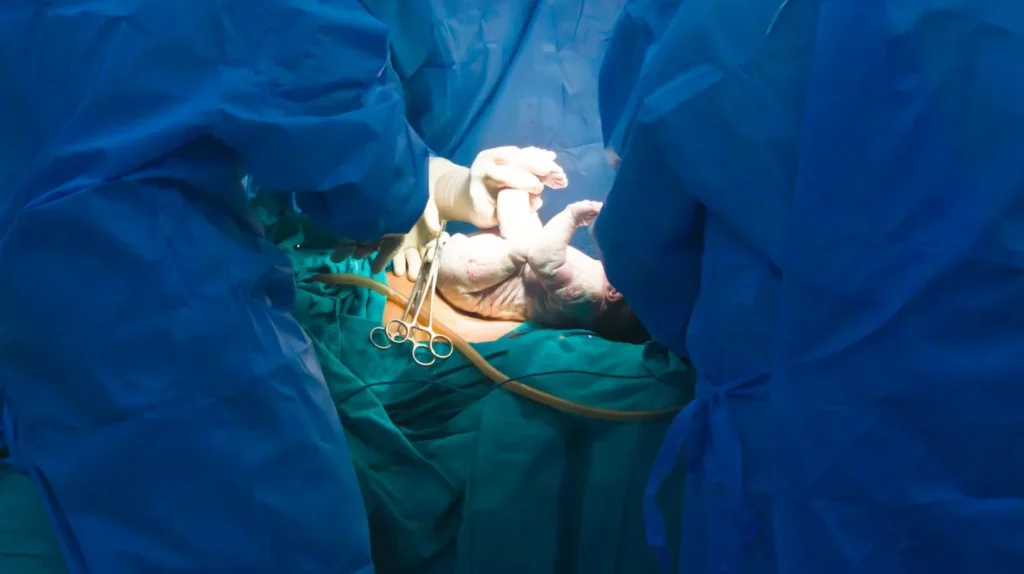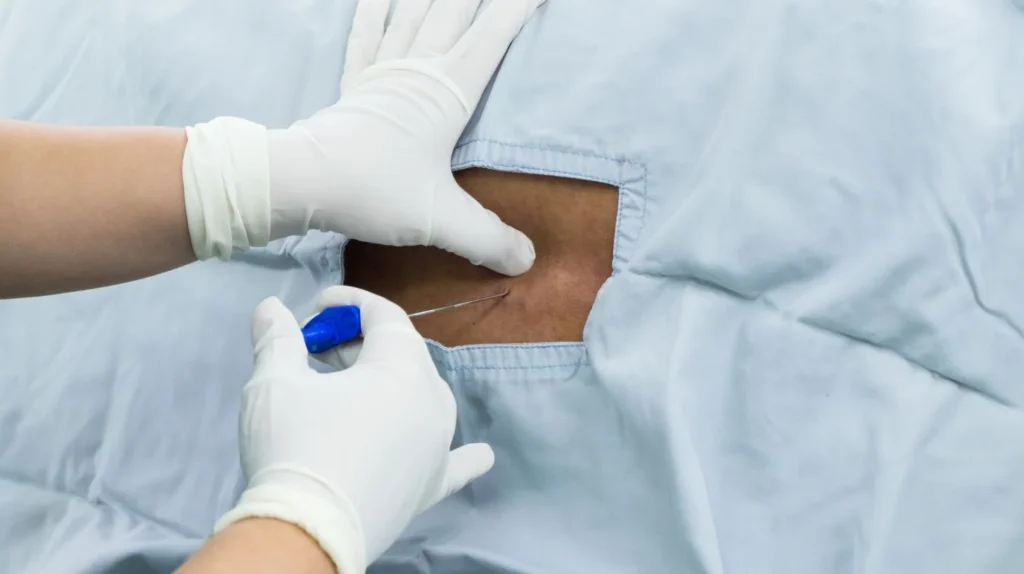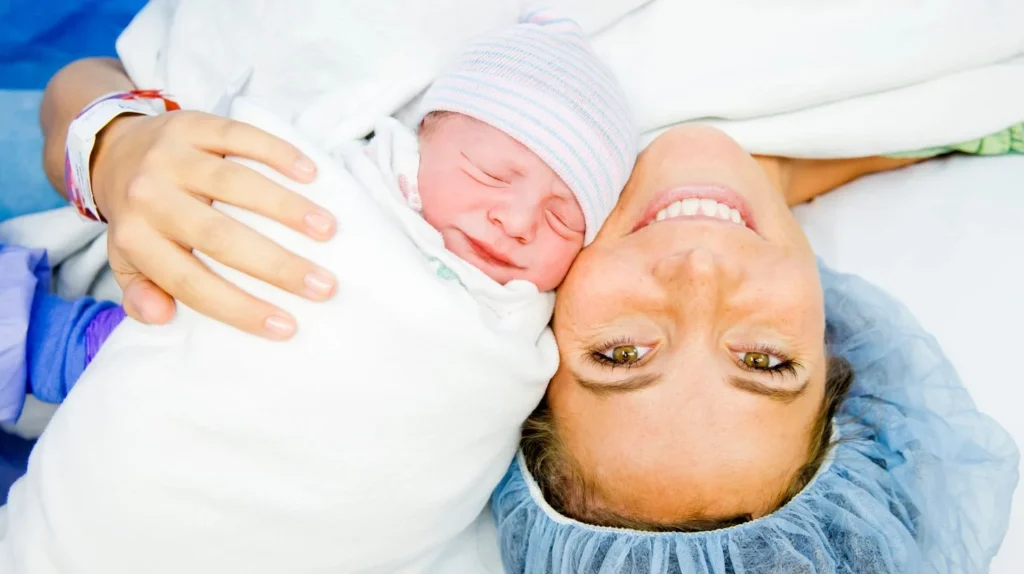
Cesarean delivery, commonly known as a C-section, is a term that often stirs curiosity and sometimes anxiety among expectant mothers. What exactly is a C-section, and why might it be necessary? These questions are not uncommon, especially for those new to the world of childbirth. A C-section is a surgical procedure used to deliver a baby through incisions in the mother’s abdomen and uterus. It’s an option that might be planned ahead of time or become necessary due to unexpected complications during delivery. In this article, we’ll explore what happens during a cesarean delivery, the reasons behind it, and what to expect before, during, and after the procedure. Whether you’re an expectant mother considering your birthing options or simply curious about this common method of childbirth, read on to gain a clear understanding of the C-section process.
What is a C-Section?
A cesarean section, or C-section, is a surgical procedure used to deliver a baby when a vaginal birth is not possible or safe. It’s a method that has become increasingly common, accounting for about 21.5% of all deliveries in India according to National Health Family Survey 2019-21.
Definition and Explanation
A C-section involves making an incision in the mother’s abdomen and uterus to safely remove the baby. This procedure might be planned ahead of time, known as an elective C-section, or it might be necessary due to unexpected complications during delivery, referred to as an emergency C-section. The decision to perform a C-section is never taken lightly and is always based on the best interest of both the mother and the baby.
Comparison with Vaginal Birth
Unlike vaginal birth, where the baby passes through the birth canal, a C-section bypasses the birth canal entirely. This can be beneficial in situations where the baby is in distress, the mother’s pelvis is too small, or other medical conditions like placenta previa are present. However, a C-section is a major surgical procedure and carries its own risks and recovery considerations. It’s essential to understand the differences between a C-section and vaginal birth, and your doctor will discuss these with you if a C-section may be necessary for your delivery.
For more insights on the stages of labor and delivery, you can refer to this comprehensive guide.
Reasons for a C-Section
C-sections are performed for various medical reasons, and understanding these can help demystify the procedure.
Medical Reasons
Some common medical reasons for a C-section include:
- Placenta Previa: When the placenta covers the cervix, blocking the baby’s exit.
- Emergency Situations: Such as fetal distress or a prolapsed umbilical cord.
- Previous C-Section: Depending on the type of uterine incision made during a previous C-section, a repeat cesarean might be necessary.
- Breech Position: When the baby is positioned feet or bottom first in the womb, a C-section may be recommended to ensure safe delivery.
Planned vs. Emergency C-Section
A planned C-section is scheduled in advance, often due to known medical conditions or previous cesarean births. An emergency C-section, on the other hand, is performed when unexpected complications arise during labor, such as the baby being in distress.
Whether planned or emergency, a C-section is a significant decision, and your doctor will carefully evaluate your individual situation. For more information on the complications during pregnancy, you might find this article on pregnancy complications helpful.
Cesarean Delivery on Maternal Request

Cesarean delivery on maternal request (CDMR) is a growing trend in India, where a pregnant woman chooses to have a C-section even if there are no medical reasons for it. This decision is often influenced by personal preferences, fear of pain during vaginal delivery, or previous traumatic birth experiences. Many women in India choose the option of a cesarean delivery after attempting a vaginal birth, but they may opt for a C-section when they find the pain during labor to be unbearable.
The choice for a cesarean delivery is made in consultation with the doctor, who will discuss the benefits and risks of both vaginal and cesarean delivery, including the surgical procedure, what happens during a cesarean section, and the recovery process.
The rising rates of CDMR in India reflect a shift in attitudes towards childbirth, with more women opting for this approach. While a C-section is a surgical procedure with its own set of risks, such as infection and blood clots, many women find the option appealing for various reasons. The C-section is planned, and the date is scheduled in advance, allowing for proper preparation, including pre-surgical tests and consultations with anesthesiologists for the spinal block.
The choice for a cesarean delivery on maternal request should be respected, but it must be an informed decision. Open communication with the doctor, understanding the reasons for a C-section, and considering the long-term implications for future pregnancies are vital in making the best choice for both mother and baby. The increase in CDMR rates in India underscores the importance of education and awareness about the procedure, ensuring that women are making choices that align with their health and well-being.
The Typical C-Section Procedure
A C-section is a well-established procedure, and knowing what to expect can ease any anxiety you may have. Here’s a step-by-step guide to what happens during a cesarean section.
Preparing for the Procedure
Before the C-section, you’ll be given either a spinal block to numb the lower part of your body. This ensures that you’ll be awake during the procedure but won’t feel any pain. A catheter will be inserted to empty your bladder, and your abdomen will be cleaned to minimize the risk of infection.
The Surgical Procedure Itself
- Incision: The doctor makes an incision in your abdomen, usually horizontally near the pubic hairline. This is often referred to as a “bikini cut.”
- Uterine Incision: A second incision is made in the uterus, through which the baby is delivered.
- Delivery of the Baby: The baby is gently lifted out, and the umbilical cord is clamped and cut.
- Removal of the Placenta: The placenta is removed, and the uterus is carefully examined for any issues.
- Closing the Incisions: The incisions in the uterus and abdomen are closed with stitches or staples.
The entire C-section procedure typically takes about 45 minutes to an hour.
What You Need to Know About a C-Section

A C-section is more than just the surgery itself. Here’s what you need to know about the entire process, from anesthesia options to immediate post-delivery care.
Anesthesia Options (Spinal Block)
A spinal block is the standard method used to numb the lower part of your body during a C-section. This approach is preferred due to various factors, including the urgency of the procedure and the doctor’s preference. The spinal block is administered through a single injection into the spinal fluid in the lower back, providing immediate numbness for the surgery. The spinal block allows you to be awake during the cesarean delivery, enabling you to hear and even see your baby right after birth.
Incisions and Surgical Techniques
The type of uterine incision and abdominal incision used can vary. The most common is a low transverse incision, which is made horizontally across the lower part of the uterus. This type of incision generally heals well and is less likely to cause complications in future pregnancies.
Recovery Room and Immediate Post-Delivery Care
After the C-section, you’ll be moved to a recovery room where your vital signs will be monitored. You may feel numb and have a catheter in place for the first few hours. Breastfeeding is usually encouraged as soon as possible, and your medical team will support you with this and any other post-delivery care you need.
Understanding what happens during a cesarean section, from preparation to recovery, can make the experience less daunting. If you have any concerns or questions, don’t hesitate to discuss them with your doctor. For more insights on recovering from a C-section, you can refer to this essential postpartum recovery guide.
Recovery Time After a C-Section
Recovering from a C-section takes time and patience. Here’s what you can expect in the immediate aftermath and the weeks following the procedure.
Immediate Recovery
Right after the C-section, you’ll spend a few hours in the recovery room. You may feel numb from the anesthesia, and it might take some time to regain full sensation in the lower part of your body. The medical staff will monitor you for any signs of infection or other complications. It’s common to stay in the hospital for three to four days after a C-section.
Long-Term Recovery and What to Expect
Recovering from a C-section takes longer than recovering from vaginal birth. Here’s what to expect:
- Pain Management: You’ll likely feel some pain at the incision site. Your doctor will provide pain relief medications to help manage this discomfort.
- Incision Care: You’ll need to take care of the incision to prevent infection. This includes keeping it clean and dry.
- Physical Activity: It’s essential to take it easy and avoid heavy lifting for at least six weeks. Gentle walks can aid recovery.
- Emotional Well-being: Hormonal changes and the physical demands of recovery can affect your emotions. Seek support from friends, family, or professionals if needed.
Signs of Infection and When to Contact Your Doctor
It’s crucial to be aware of any signs of infection, such as:
- Redness, swelling, or oozing at the incision site
- Fever or chills
- Foul-smelling vaginal discharge
If you notice any of these signs, contact your doctor immediately. Early detection and treatment can prevent more serious complications.
Future Pregnancies and C-Sections

If you’ve had a C-section, you might wonder what it means for future pregnancies. Here’s what you need to know:
Repeat Cesarean Sections
If you’ve had a C-section, you might have another one in future pregnancies. The decision depends on the type of uterine incision made during the previous C-section and other individual factors.
Vaginal Birth After Cesarean (VBAC)
Some women can have a vaginal birth after a cesarean (VBAC). The success of a VBAC depends on several factors, including the reason for the previous C-section and the type of uterine incision.
Considerations for Future Pregnancies
- Planning: Discuss your options with your doctor well before your next pregnancy.
- Monitoring: Future pregnancies will likely require closer monitoring to ensure the safety of both mother and baby.
- Emotional Support: Consider joining support groups or seeking counseling to address any fears or concerns about future pregnancies.
For more insights on planning future pregnancies, you can explore this comprehensive pregnancy guide.
Understanding the recovery process and considering future pregnancies after a C-section can empower you to make informed decisions. Always consult with your doctor to ensure that your specific needs and concerns are addressed.
Key Takeaways
Recovery Time: A C-section requires a longer recovery time, with specific care needed for the incision site and restrictions on physical activity for at least six weeks.
Signs of Infection: Awareness of infection signs, such as redness or fever, is crucial for early detection and treatment.
Future Pregnancies: Options for future pregnancies, including repeat C-sections or VBAC, should be discussed with your doctor.
Emotional Well-being: Emotional support during recovery and planning for future pregnancies is essential for overall well-being.
The Bottom Line
A C-section, or cesarean delivery, is a surgical procedure that may be planned or necessary due to emergency situations. Understanding what happens during a cesarean delivery, the recovery process, and considerations for future pregnancies is vital for expectant mothers. Knowledge empowers women to make informed decisions and to approach this significant life event with confidence and care.
The support of medical professionals, family, and friends can make the journey smoother. Whether it’s your first C-section or you’re considering future pregnancies, open communication with your doctor and a supportive environment can lead to a positive and healthy experience. Remember, every pregnancy is unique, and personalized care is key to a successful birth and recovery.
Frequently Asked Questions (FAQs)
What happens during a cesarean section procedure?
During a cesarean section, an incision is made in the abdomen and uterus to deliver the baby. It’s a surgical procedure that might be planned or required if the baby is in distress.
How long does recovery take after a C-section delivery?
Recovery after a c-section delivery typically takes four to six weeks. It may take longer to recover if there are complications like infection or blood clots.
Can I have a vaginal birth after a cesarean (VBAC)?
Yes, vaginal birth after a cesarean (VBAC) is possible. However, it requires careful planning and consultation with your doctor, considering factors like the type of uterine incision.
Is general anesthesia used during a C-section?
General anesthesia might be used during a C-section, but the spinal block is more common. The choice depends on medical needs and the time of delivery.
What are the common reasons for needing a C-section?
Common reasons for needing a C-section include placenta previa, emergency situations, or a planned cesarean due to previous c-sections or other medical conditions.
Can I request a C-section delivery on maternal request?
Yes, a C-section delivery on maternal request is possible. Discussing this with your doctor and understanding the reasons for a c-section is essential for informed decision-making.
How are stitches in the uterus handled after a C-section?
Stitches in the uterus after a c-section are usually dissolvable and don’t need to be removed. Careful monitoring for signs of infection is essential in the days after birth.





